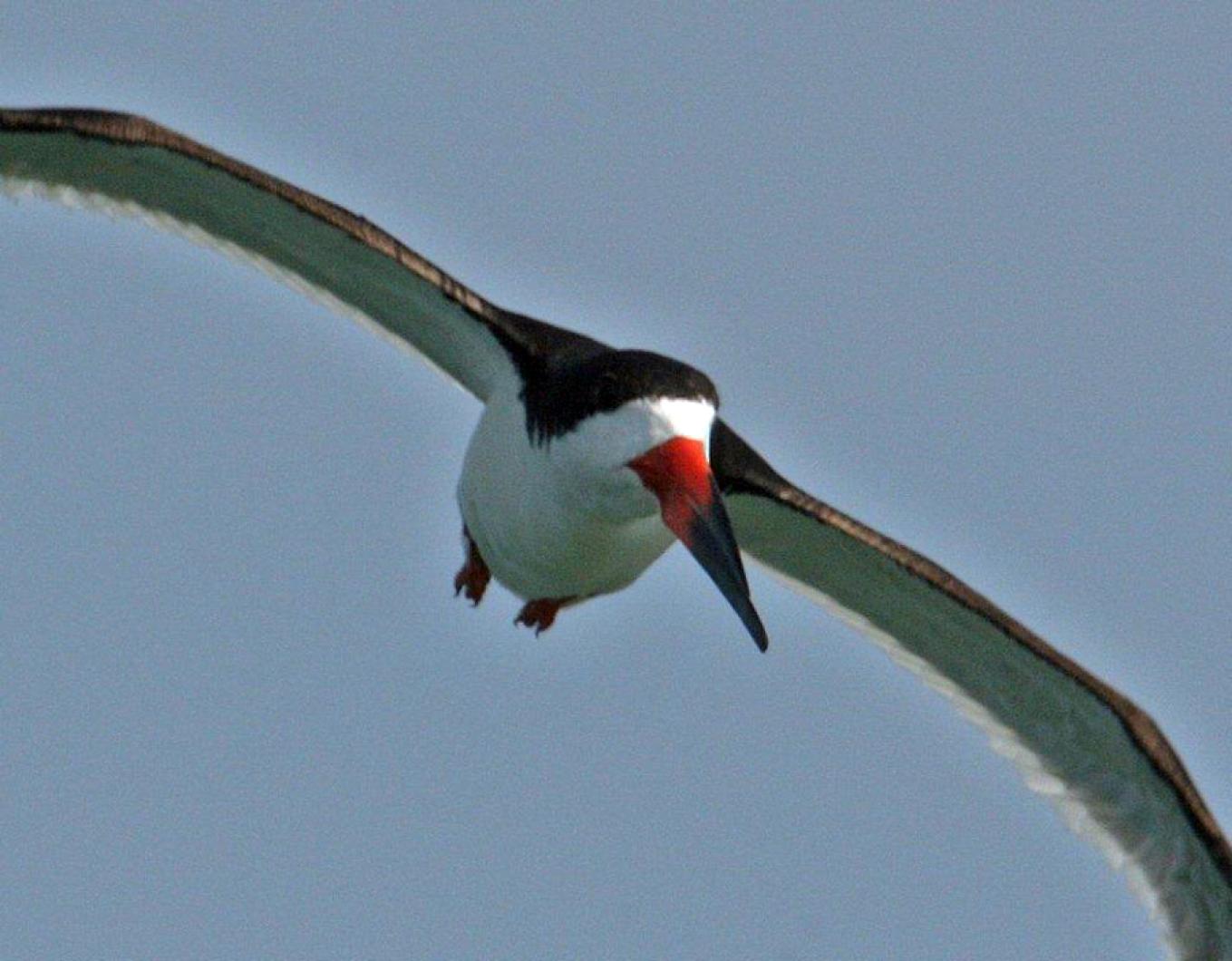Nesting terns have for quite awhile been under pressure to find appropriate and safe nesting habitat on the beaches of New England. The coastal waterbird program at Mass Audubon and the Island’s management unit of The Trustees of Reservations both dedicate a lot of manhours and resources to the task of protecting tern colonies over the course of the breeding season, roughly from June until now.
Last year least terns in their fickle fashion decided that the sands of Norton Point at the south side of Katama Bay offered the optimum conditions to start a nesting colony, and it was a big one. Then common terns and some roseate terns — the latter usually populate a single island in Buzzards Bay — found the same Katama real estate to their liking and staked out claims.
Well into the summer of 2009, just about this date, this large new tern colony attracted a pair of black skimmers, a relative of terns and gulls. Their looks, however, are extreme and unique, giving our more common and better known American oystercatchers a run for their money in the bizarre looks category. Black on top and white below, with black and red beaks and short red legs and feet, skimmers have exceptionally long wings and a deliberate and buoyant flight. Hunting skimmers, alone or in group formations, are incredible on the wing!
The skimmer’s call is like a muzzled dog’s bark. Unique to them among birds are a vertical pupil like the eye of a cat (skimmers do a lot of their foraging at night, but they catch aquatic prey by touch, not by sight); and skimmers have a significantly longer lower mandible which is pushed through the water in flight until it encounters something edible, when it snaps shut in a fraction of an instant. Like an oystercatcher’s, the bill is laterally compressed, so that head-on to the bird the bill is a thin vertical line, like a pair of scissors on edge.
The skimmers last summer seemed to be doing the kind of things that would-be nesters do — make a little scrape in the sand, hang out in the same spot and defend it against intruders — but no eggs were laid.
This season, the initial skimmer pair, assuming it’s the same duo as 2009, showed up right on schedule and acted as if they owned the place, occupying a location very similar to where they set up housekeeping last year.
The Trustees beach managers were eager to see what would hatch from the skimmer nest. Initially the birds laid one egg; they appropriated two nearby least tern eggs into their nest as their own, and subsequently they laid a second skimmer egg. According to observers, one or two of the tern eggs hatched but did not survive for long. One of the skimmer eggs, however, hatched into a healthy chick. Then a second pair of skimmers arrived and laid eggs, three of them. On August 8 a third pair was spotted in proximity to the others. All this new avian activity is very exciting to folks interested in such matters. This year’s nest is the first known breeding success of this distinctive species on Martha’s Vineyard. People who frequent the coastlines of the lower Atlantic states or the Gulf (now surely a toxic zone for these birds) may be familiar with them, but in these parts this has been considered a rarish bird passing through in late summer, sometimes propelled here by strong southern storm systems. Until now.
Lanny McDowell is an avian photographer and freelance writer who contributes frequently to the Gazette. His Web site is ottgallerymv.com.




Comments
Comment policy »